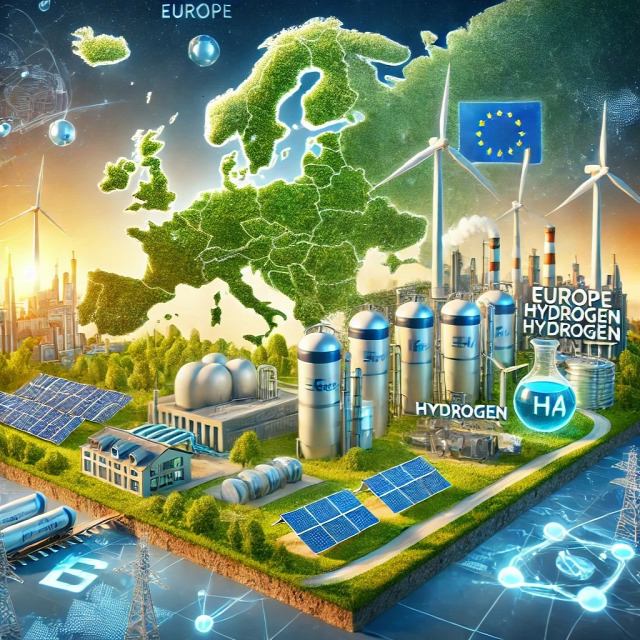
The European Green Hydrogen Market is rapidly emerging as a key player in the global transition towards sustainable energy. With the increasing focus on reducing carbon emissions and mitigating climate change, green hydrogen is gaining significant attention as a clean energy alternative for various sectors. The European Union (EU), along with several individual nations, has set ambitious targets to reduce greenhouse gas emissions, with green hydrogen playing a central role in this transformation.
According to BISResearch, the Europe green hydrogen market was valued at $253.8 million in 2023, and it is expected to grow with a CAGR of 66.72% during the forecast period 2023-2033 to reach $42,108.6 million by 2033.
What is Green Hydrogen?
Green hydrogen is hydrogen produced through the electrolysis of water using renewable energy sources like wind, solar, and hydroelectric power. Unlike traditional hydrogen production methods, which rely on fossil fuels and release carbon dioxide, green hydrogen is a carbon-free solution. The process of electrolysis involves passing an electric current through water, splitting it into hydrogen and oxygen. If the electricity used in this process comes from renewable sources, the resulting hydrogen is considered "green."
Key Developments in the European Green Hydrogen Market
- Hydrogen Valleys: The concept of "hydrogen valleys" has gained traction in Europe, where regions develop integrated ecosystems for hydrogen production, storage, distribution, and utilization. These valleys bring together various stakeholders, including government agencies, energy companies, and industries, to create a circular economy for hydrogen. Notable examples include the North Sea Wind Power Hub in the Netherlands and the Rhônalpénergie-Environnement in France.
- Hydrogen Infrastructure: Europe is working towards developing a robust hydrogen infrastructure. This includes pipelines for transporting hydrogen, storage facilities, and refueling stations for hydrogen-powered vehicles. The European Hydrogen Backbone (EHB) initiative aims to create a dedicated hydrogen pipeline network across the continent to connect hydrogen production sites with demand centers.
- Collaborations and Partnerships: To accelerate the development of the green hydrogen sector, collaborations between governments, businesses, and research institutions are becoming increasingly common. For instance, the European Clean Hydrogen Alliance (ECH2A) brings together various stakeholders to work on joint projects and create a competitive hydrogen economy in Europe.
Request A Detailed Sample on the Europe Green Hydrogen Market!
Opportunities in the Europe Green Hydrogen Market
The Europe Green Hydrogen Market offers significant opportunities in sectors like transportation, where hydrogen can decarbonize heavy-duty vehicles, and industry, particularly in steel, chemicals, and cement, where hydrogen can replace fossil fuels. Additionally, the potential for exporting green hydrogen to global markets and using it for energy storage solutions further strengthens Europe's position as a leader in clean energy.
Challenges in the European Green Hydrogen Market
The European Green Hydrogen Market faces challenges such as high production costs, limited infrastructure, and regulatory hurdles. Scaling up renewable energy capacity is crucial to meet demand, while the lack of a unified regulatory framework across countries creates market fragmentation. Additionally, securing investments for large-scale projects and ensuring efficient storage and transportation are key obstacles that need addressing to unlock the market's potential.
Conclusion:
The green hydrogen market in Europe is on the cusp of rapid growth, driven by ambitious decarbonization targets, strong government support, abundant renewable energy resources, and increasing private sector investment. While there are challenges to overcome, such as high production costs and infrastructure gaps, the opportunities for green hydrogen in transportation, industry, and energy storage are vast. With continued collaboration, innovation, and investment, Europe is poised to become a global leader in the green hydrogen economy, helping pave the way for a cleaner, more sustainable future.

